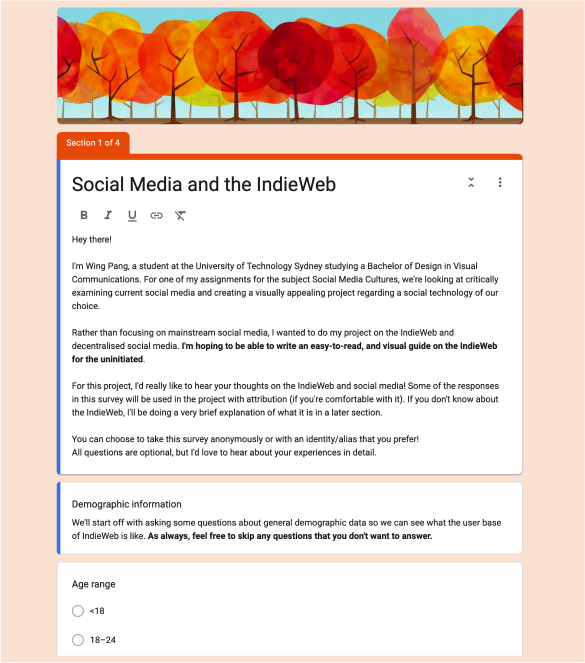Many survey participants expressed an interest in IndieWeb and decentalised social media.
While joining decentralised social media is perceived to have a lower bar of entry, some short-form responses expressed that creating a website and joining the IndieWeb is too complicated for a non-technical user (28/63 responses).
